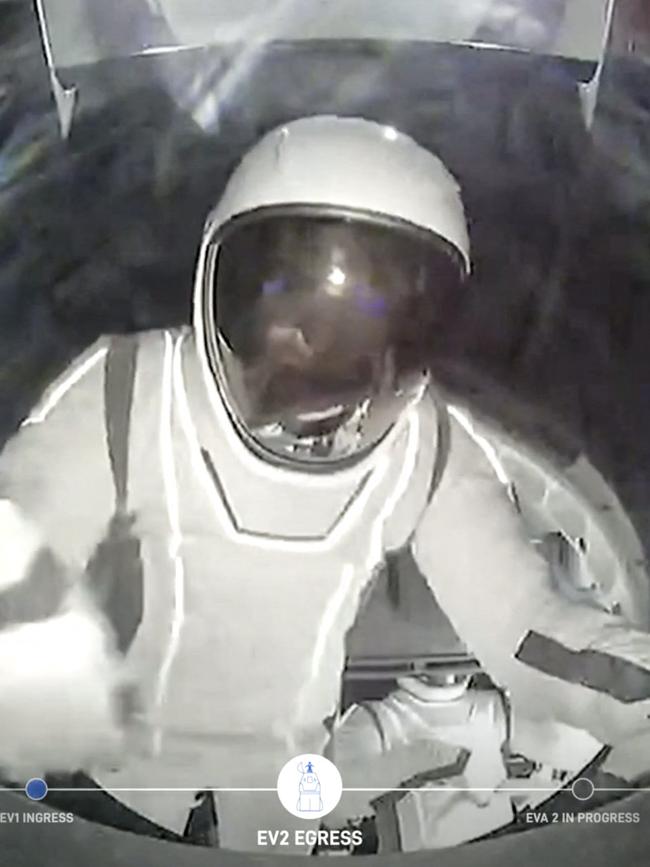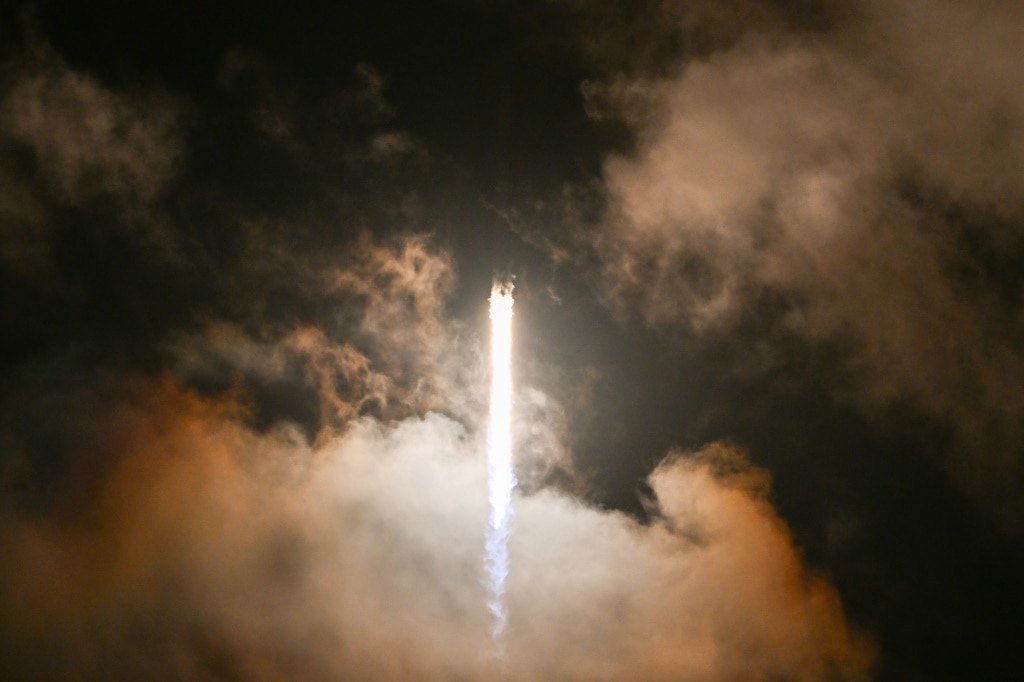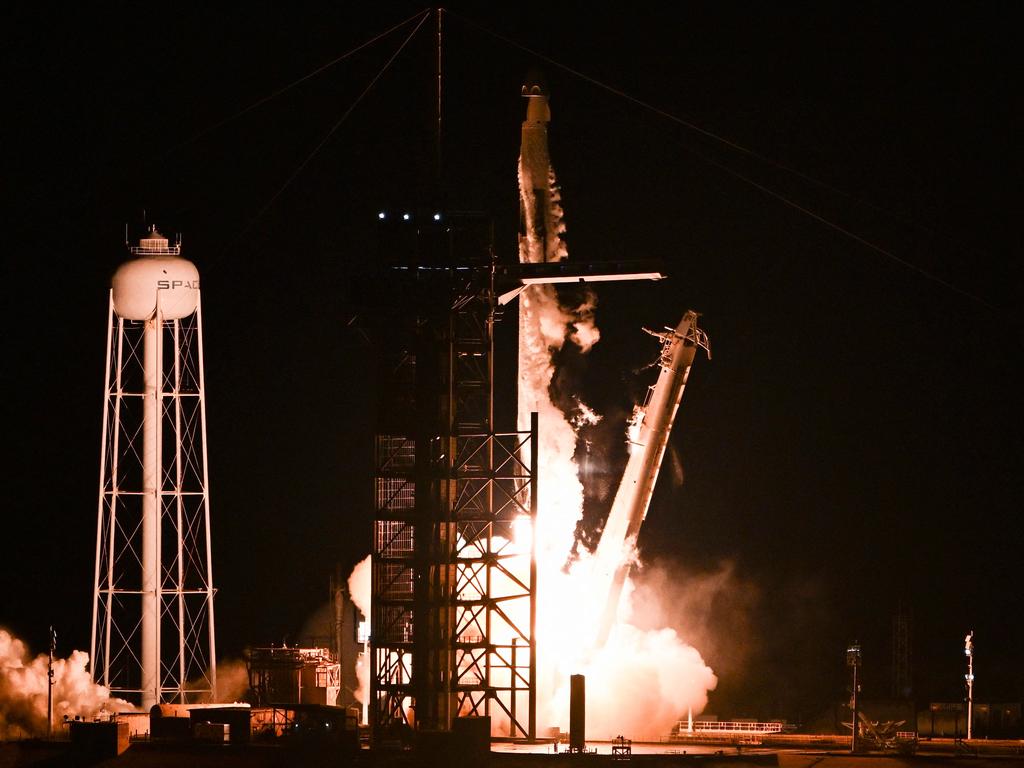SpaceX astronauts conduct space walk, putting new spacesuits to the test
Billionaire Jared Isaacman helps to fund first-ever commercial space walk incorporating SpaceX-designed suits
Private-citizen astronauts travelling with SpaceX completed the first commercial space walk, pushing new boundaries for the Elon Musk-led company.
SpaceX kicked off the space walk, a centrepiece on the privately funded Polaris Dawn spaceflight, shortly after 6am. ET Thursday, when oxygen began flowing inside the astronauts’ SpaceX-developed suits.
After leak checks and boosting the pressure of the suits, a company livestream showed Jared Isaacman, a tech-industry billionaire, leaving the SpaceX Crew Dragon vehicle through its hatch, conducting a series of mobility tests and coming back inside around 7am. The entire spacecraft was exposed to the vacuum of space.

Sarah Gillis, a SpaceX employee who is also a member of the crew, left the spacecraft after Isaacman returned, performing her own set of tests. Around 7:15am, the hatch was closed again and SpaceX began bringing the cabin back to normal conditions.
The mission, called Polaris Dawn, marked a milestone for SpaceX, which has aspirations to return humans to the moon and eventually establish a human presence on Mars. The crew members donned SpaceX-designed and manufactured suits that were previously untested in orbit.


“Building a base on the Moon and a city on Mars will require thousands of spacesuits,” SpaceX said in a post on X.
The space walk was also a first for private space flights, a nascent business pursued by SpaceX and other companies. The Polaris Dawn mission was funded by Isaacman, who paid for a separate SpaceX flight about three years ago and has said he wants to help advance space exploration.
“SpaceX, back at home we all have a lot of work to do, but from here, Earth sure looks like a perfect world,” Isaacman said at one point during his walk. Musk in a post on X congratulated Isaacman and the others, as well as SpaceX employees working on the company’s Crew Dragon program.

Extravehicular activity, as spacewalks are called, is a fairly common part of orbital operations, like doing maintenance on the International Space Station. To date, spacewalks have only been conducted by government astronauts working on missions set up by national space agencies.
They are risky. Astronauts must manoeuvre through space with nothing between them and the vacuum of space but their spacesuits.
Isaacman and Gillis remained connected by their hands or feet, as well as tethers, to the Crew Dragon spacecraft that is transporting them.
Scott Poteet, a retired air force pilot, and Anna Menon, a space-operations engineer at SpaceX, are also on the flight.
The Polaris Dawn mission launched early Tuesday on a SpaceX rocket from Florida, and crew members began preparing for the space walk shortly after lift-off. Pressure levels inside the vehicle were slowly lowered as oxygen levels increased, helping get nitrogen out of the crew’s bloodstreams and reduce decompression sickness.

On Tuesday, SpaceX said its Crew Dragon vehicle reached a distance of 870 miles above Earth, meaning the Polaris Dawn crew members were more than three times higher than the International Space Station — the highest altitude humans have reached in space since the National Aeronautics and Space Administration’s Apollo program decades ago.
The private astronauts and their vehicle have undergone intensive testing over the past couple of years, according to SpaceX and members of the Polaris Dawn team. That has ranged from skydiving and entering a vacuum chamber to developing backup plans for the operation.
In addition to testing the spacesuits, the operation broke new ground with Crew Dragon, SpaceX’s low-Earth-orbit vehicle.
Because the craft has no airlock, all four crew members put on their suits before the vehicle was “vented,” which removed its pressure before the space walk and left its systems exposed to the vacuum of space. Crew Dragon had never been vented down in orbit.
The Polaris Dawn astronauts have carried out other tasks during their time in orbit, including scientific research and testing SpaceX’s Starlink satellite network.
The mission is scheduled to last up to five days, with the company’s vehicle set to return the crew as late as Sunday. The Crew Dragon ship is intended to re-enter Earth’s atmosphere and drift down under parachutes, landing in the Atlantic near Florida.
The Wall Street Journal






To join the conversation, please log in. Don't have an account? Register
Join the conversation, you are commenting as Logout